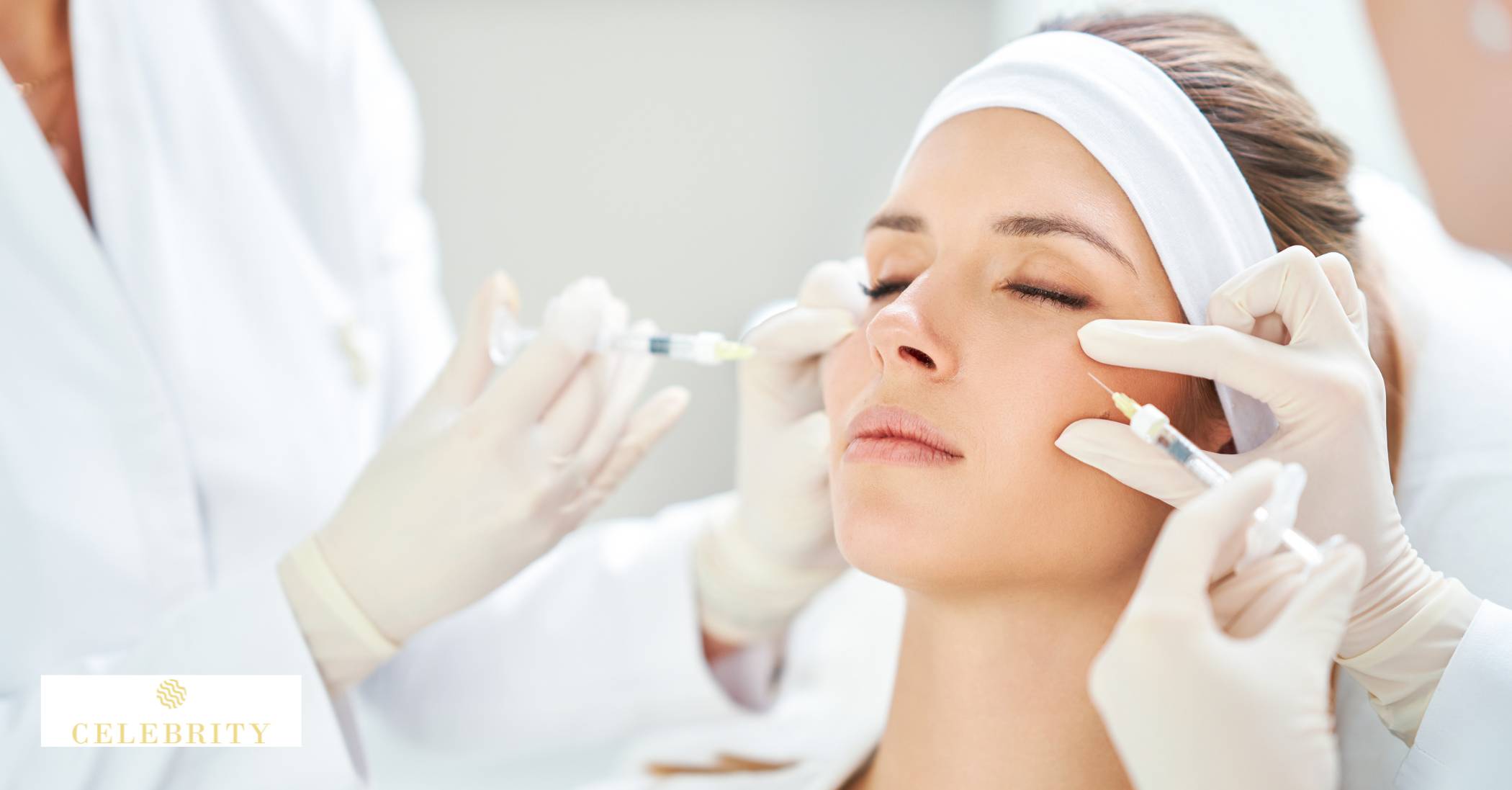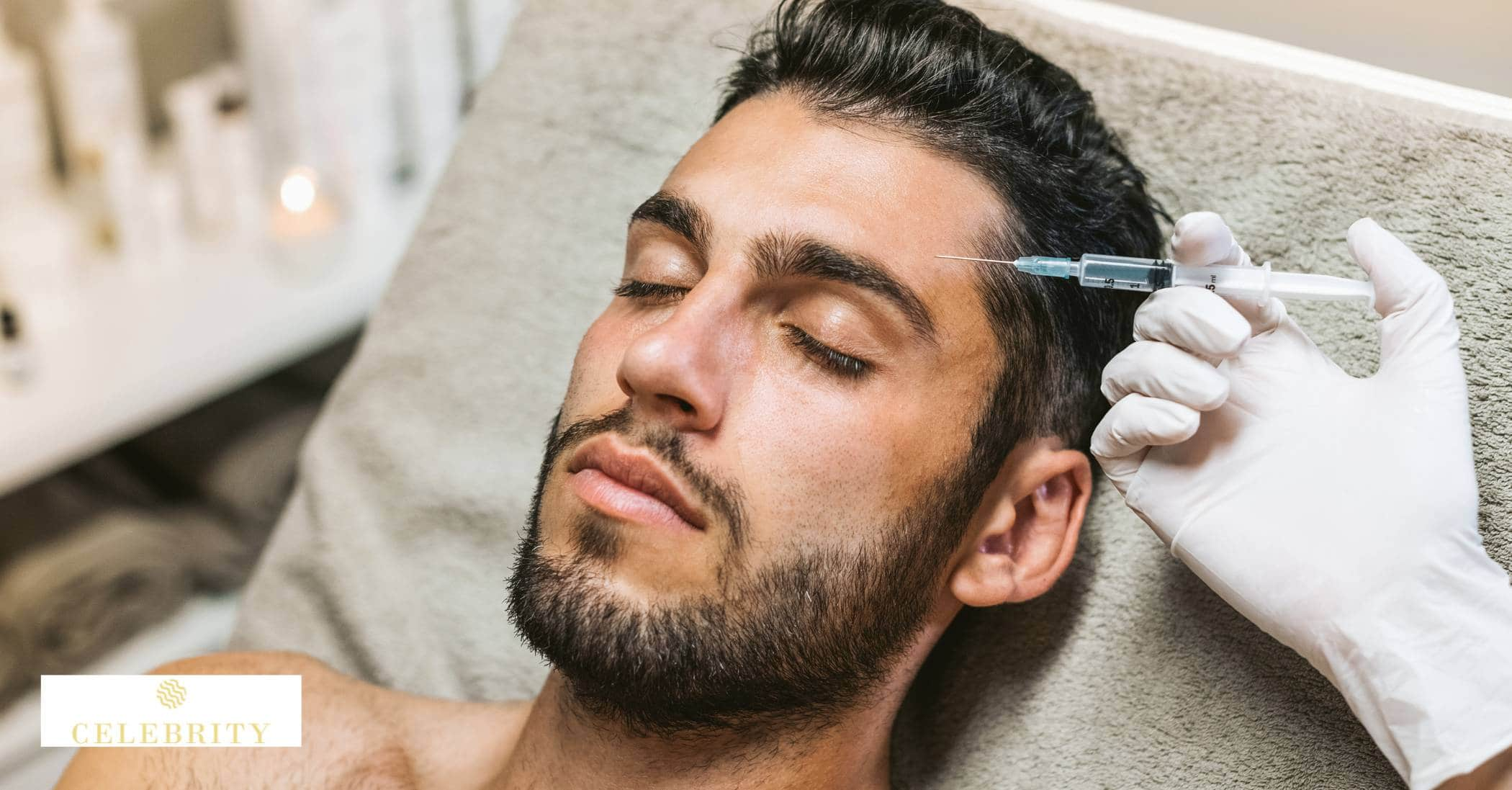Are you tired of the signs of aging showing up on your face? Botox is one of the famous and fairly effective treatments for taking away the signs of wrinkles and fine lines. This is a non-surgical procedure where small doses of botulinum toxin are injected into the muscles, leading to a temporary relaxation of the muscles, thus smoothening the overlying skin.
In this blog post, we’ll delve into what Botox is, how it works, and the benefits it can provide. We’ll also explore common misconceptions and answer frequently asked questions. So, let’s dive in and discover if Botox is the right choice for you.
At Celebrity Laser, we offer expert Botox treatments tailored to your individual needs. Our experienced professionals will provide you with a personalized consultation to determine the best approach for achieving your desired results.

What is Botox and its Side Effects?
Botox® is one of the most well-known brands of injections containing a neurotoxin known as botulinum toxin. Botulinum toxins affect nerves and lead to some weakening of muscles. You might get a botulinum toxin injection for cosmetic or medical reasons. For Botox, healthcare providers inject small amounts of the medicine into specific muscles to smooth wrinkles, prevent migraine headaches, and treat a wide range of other health conditions.
Endemic to the environment, bacteria of C. botulinum are quite common and do not pose any threats to human beings. The only limitations come when the spores become activated, and the population of the cells grows. At some stage, the bacteria start synthesizing Botulinum toxin, the lethal neurotoxin that’s responsible for causing botulism disorders.
Botulinum toxin is highly toxic. According to some scientists, 1 gram of crystalized toxin powder could kill about one million people, and 2-3 kilograms could wipe out the whole world population.
Nevertheless, when it comes to treating patients with this toxin substance and delivering it through bottles, it is said that a person is safe with few adverse effects—American Osteopathic College of Dermatology.
Non-toxic doses of Botulinum toxin are incorporated in the formulations intended for injection. The medication can induce a momentary conduction blockade of muscles, which is helpful for many patients suffering from muscle or nerve dysfunction.
How does Botox work?
Botox blocks nerve signals to muscles. As a result, injected muscles cannot contract. These effects are always temporary but can last for several months. The injected muscle depends on the primary area of concern. Several areas can be treated in one session.
What does Botox Eventually Do to Your Face?
Botox relaxes the facial muscles and smooths out wrinkles and lines temporarily. Botox injection into any particular area blocks nerve signals that contribute to the contraction of muscles, which in turn causes such wrinkles. This ultimately yields a smoother, younger-looking complexion.
The common areas treated by Botox include:
- Forehead wrinkles
- Crow’s feet or wrinkles around the eyes
- Frown lines or between the eyebrows
- Bunny lines, or wrinkles on the nose
- Chin dimples
After some time administering Botox, the muscles will start to get used to the fact that they do not have to create wrinkle-forming expressions as strongly as they used to. You will become more aware of making fewer facial movements, which cause wrinkles. Your skin will continuously look more youthful and radiant with time as the use of Botox is continued.

What are the benefits of Botox?
Botox has a number of advantages for people who want to improve their skin appearance:
- Erases wrinkles and fine lines: Botox relaxes facial folds and lines, making you look fresher and younger.
- Non-surgical treatment: In Botox, the treatment is performed through a few minute non-invasive procedures, and it doesn’t require any surgery and downtime.
- Fast and simple: Usually, Botox treatments take only a few minutes.
- Long-acting: Though Botox is temporary, the effect can last for months.
- Customized Treatments: These treatments usually involve personalization based on needs and wants in relation to a specific outcome regarding facial rejuvenation.
Generally speaking, Botox is a harmless procedure and an effective way to divest yourself of wrinkles in order to achieve a more youthful complexion.
Ready to look your best? Our expert injectors offer personalized Botox treatments tailored to your needs. Schedule a consultation today.

What are the cons of doing Botox?
Botox is, for the most part, a safe procedure. However, there are some risks of injections of botulinum toxin, such as Botox, one should know. Possible side effects and complications include:
- Bruising and pain at the injection site
- Flu-like symptoms
- Headache
- Nausea
- Redness
- Temporary facial weakness or drooping
In rare cases, the botulinum toxin may spread from the area where it was injected. This can cause a condition called botulism, with symptoms such as difficulty breathing, difficulty swallowing, and muscle weakness.
With preventative Botox also comes the risk of “frozen” facial expressions, a result of the muscle-relaxing side effects of the procedure. You may want to consider the side effects and results of Botox quite reasonably if you have no wrinkles to begin with.
Who Shouldn’t Get Botox?
Most of the time, Botox is safe for the majority of people. However, some people cannot undergo this treatment. Here are some of them:
- Pregnancy and breastfeeding: Such treatment should be avoided by pregnant women and practicing mothers because of its possible harm to the developing child.
- Neurological disorders: People with certain neurological disorders, such as myasthenia gravis, are likely to experience more complications than normal people undergoing Botox treatment.
- Allergies: If you are allergic to botulinum toxins, don’t get Botox.
- Infections: Patients with an active infection at the intended injection site or systemic infection should refrain from using Botox.
- Blood clotting disorders: Patients with various clotting disorders stand a higher risk for bleeding and/or bruising after botox injections.

How long does Botox last?
On average, Botox lasts 3-4 months. Definitely, there will be patients in whom it will last longer, in that 4-6 month range, or shorter, in that 2-month range. It’s also common for first-timers to notice that perhaps it doesn’t last as long initially, but after the second treatment, it may last a little bit longer.
Where does Botox go when it wears off?
The neurotoxin protein in Botox blocks neurotransmitters from communicating with your facial muscles. Over time, the elements in Botox degrade into innocuous fragments known as amino acids. The degraded elements are either excreted through the kidneys as waste or are used up in other proteins.
FAQs
1. What happens when you stop Botox?
If you stop Botox after having it for many years, the only thing that will happen is that your wrinkles will come back-thankfully a little more slowly than if you had never used the medication. Should you ever wish to take a break from Botox, you can safely stop using it and resume its use at any time with no adverse effects.
2. Is Botox good or bad for you?
Botox is a common cosmetic treatment, with the majority being largely safe. However, long-term use has shown that there might be a few lasting effects.
3. What is the biggest risk of Botox?
Generally safe, the side effects and complications with the use of botulinum toxin include the following: Bruising, pain at the site of injection, Flu-like symptoms, Headache, Nausea, Redness, Temporary facial weakness or drooping.


